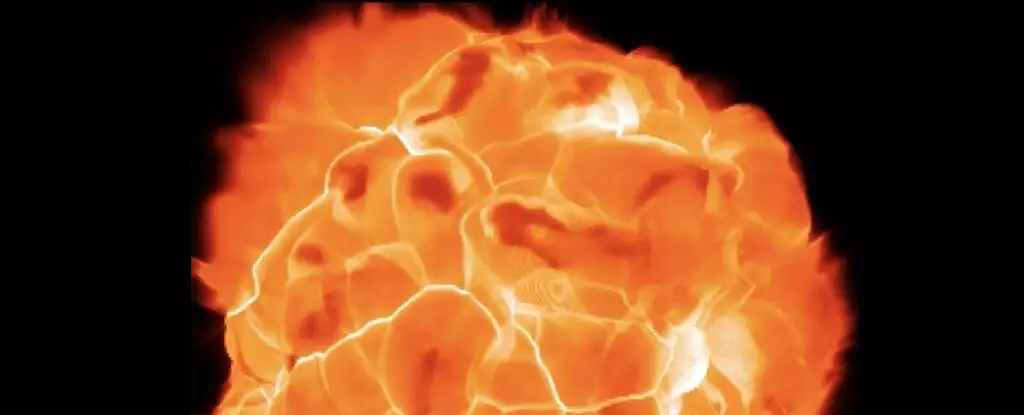For years, amateur astronomers have been captivated by Betelgeuse, also known as Beetle-juice, a red supergiant star situated in the Orion constellation. This massive star has been a subject of interest due to its unexpected dimming, which has sparked widespread attention in the astronomy community. Betelgeuse’s variability is characterized by cycles, one of which occurs over a 2,170-day period, significantly longer than its typical pulsation period. A recent study has proposed that a companion star with a mass of 1.17 solar masses could be responsible for this unusual behavior. This companion star would need to orbit at a distance approximately 2.43 times the radius of Betelgeuse, potentially influencing the modulation of dust in the surrounding region and causing the observed variations in brightness.
Betelgeuse shines brightly in the night sky, representing the shoulder of the hunter in the Orion constellation. With a radius about 1,000 times that of the Sun, Betelgeuse is one of the largest stars visible to the naked eye. Situated at a distance of 642 light-years, this red supergiant emits approximately 100,000 times more light than the Sun. Over the past five years, Betelgeuse has garnered special attention due to its unanticipated dimming, which occurred towards the end of 2019 and returned to normal in the first half of 2020. The phenomenon, now known as “The Great Dimming,” has puzzled astronomers and sparked investigations into its root cause.
Betelgeuse’s light curve exhibits a Long Secondary Period (LSP) lasting approximately 2100 days, a common feature among stars in the Red Giant Branch of the Hertzsprung-Russell Diagram. While the mechanism behind the LSP remains unknown, it is believed to be a secondary cycle to a shorter one. The duration of the LSP typically ranges from hundreds to thousands of days, with the cycle being significantly slower than the star’s radial pulsation. One intriguing theory suggests that the LSP may result from the pulsation of Betelgeuse’s outer layers, indicating the star’s larger-than-expected size and a potential supernova explosion in the coming centuries.
Researchers have proposed a fascinating explanation for Betelgeuse’s long-term variability, pointing towards a low-mass companion star named Ori B (Orionis). This binary star system could be modulating the dust surrounding Betelgeuse, causing fluctuations in brightness when the companion passes in front of the star. If Ori B’s presence is confirmed, it would significantly enhance our understanding of Betelgeuse’s evolutionary trajectory. Contrary to previous beliefs that Betelgeuse is nearing its supernova phase, the influence of Ori B suggests that the star may have more time before the anticipated explosion occurs.
Betelgeuse continues to intrigue astronomers with its enigmatic behavior and unexpected dimming. The discovery of a potential companion star and its role in modulating dust around the red supergiant opens new avenues for research and challenges existing theories. As we delve deeper into the mysteries of Betelgeuse, we may uncover more secrets about the life cycle of massive stars and the forces that govern their evolution in the vast expanse of space.


Leave a Reply